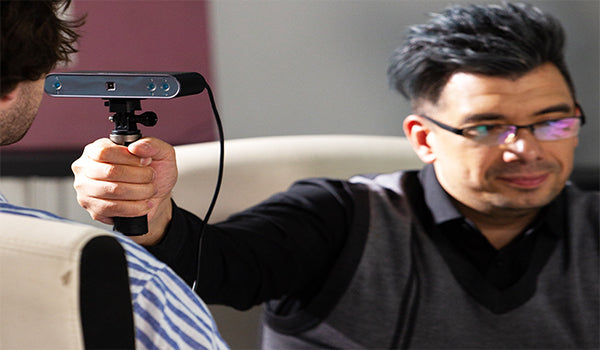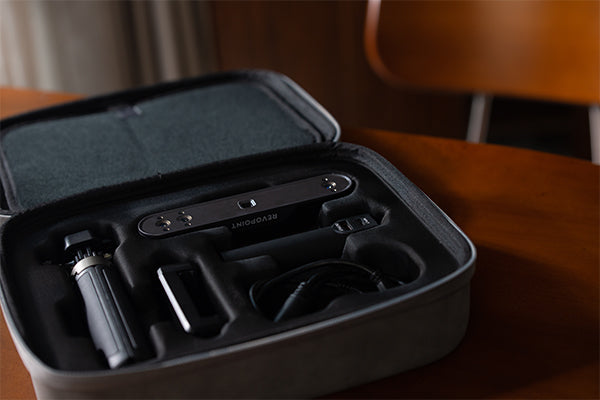3D scanners are one of those pieces of tech that nearly everyone has heard of, but when it comes to what they are really used for, a lot of head-scratching ensues.
So, what are 3D scanners used for? In short, you can create 3D models of objects that can be 3D printed or used in 3D software for a myriad of applications like reverse engineering, animation, quality control, design, and many more.
Oh, you wanted more information than that. Fine, let’s take a real look at what you can do with a 3D scanner.
Firstly, let’s touch on the key reason for the existence and popularity of 3D scanners. They are really good at measuring objects accurately, saving you a ton of time (also a lot of money if you’re running a business) compared to manually measuring something and then creating a 3D model based on the measurements. And it’s for this simple reason that 3D scanners are rapidly becoming must-have tools for consumers and businesses.
With that reason in mind, let’s look at how people use 3D scanners.
The Biggest 3D Scanning Applications
Reverse Engineering
Old machines, buildings, vehicles, and many other things sometimes break or need updating. Unfortunately, finding accurate models or plans for these things can often be challenging. So, this is where 3D scanning comes in, as it enables engineers to quickly make accurate 3D models that they can use to replace parts or update obsolete parts without spending days painstakingly manually measuring the components and building them in CAD software.
Another everyday use of reverse engineering is finding out how something was made and the design intent behind it. Companies often do this to understand a competitor’s products better.
Quality Control
Anyone working in manufacturing will likely tell you that accuracy matters, especially for highly-engineered things, when a part only 1mm off in size is enough to make it useless. So, quickly scanning and checking if a component’s size is within specification is essential for productive and cost-effective manufacturing.
Digital Content
3D scanners have significantly sped up the creation of 3D models (people and objects) for video games and CGI in movies where the demand for photorealistic graphics and models is immense. And having to model every single asset manually would be prohibitively time-consuming and expensive, so 3D scanners allow them to make a lot of content quickly and cheaply. And with the rise of AR and VR for entertainment, shopping, educational, and other experiences, the demand for 3D models is only set to increase.
Product Development
Rapid prototyping is essential to fast product development, and 3D scanners are instrumental in making this happen. Getting accurate measurements from the start helps to ensure your prototype is the correct size, meaning a lot of trial and error trying to get the prototype to fit can be avoided, vastly reducing the time and costs before arriving at the final production model.
And this isn’t just for industrial design; jewelry and cloth designers have been using them to help create unique items that previously would have been very time-intensive.
Duplication
For the entirety of humankind’s existence, we’ve been copying things. However, we didn’t truly hit our copying stride till the digital age with the dawn of Ctrl-C and Ctrl-V. And now, with the increasing affordability of 3D printers and scanners, copying physical objects is booming. 3D scanners make this fast, accurate, and easy to achieve, especially for small fiddly items with lots of details.
And what sort of things do people duplicate? Whatever they want (within reason), from vases to car parts. And for mysterious reasons, many people like duplicating miniature figurines holding guns and swords.
Health Care
In healthcare, accuracy is essential to providing effective patient care. Doctors increasingly use 3D scanners to create better-fitting prosthetics, casts, orthotic shoes, and orthodontic braces. They’ve also been used in plastic surgery to help surgeons show patients how they will look after surgery.
3D scanners are also gaining popularity in gyms for full-body scans as an effective way to measure fitness progress.
Construction
In construction, 3D scanning has been a boon. Accurate 3D models of construction sites allow for better planning and coordination, as all the stakeholders have access to reliable on-site data. As well as letting errors be spotted quickly, without needing multiple onsite inspections by architects, engineers, and surveyors that slow down work and cost money.
Science and Education
Whether preserving or restoring historical artifacts and buildings, studying geology or creating a safe way for students to study priceless objects, 3D scanning is there to capture them in a safe, none invasive way. Some museums have even been creating online 3D exhibitions after 3D scanning some of their collections so people, where ever they are in the world, can appreciate and learn about historical items.
Whew, that’s a ton of things you can do with a 3D scanner, and this list is by no means comprehensive. People use them all the time for random projects like creating customized face masks and protective gear or replacing a remote controller’s broken battery cover. But we promise you the fundamental reason for using them is always the same – saving a boatload of time.
If this article piqued your interest in getting a 3D scanner, you should check out Revopoint3D.com to learn even more about 3D scanners.



Leave a comment
This site is protected by hCaptcha and the hCaptcha Privacy Policy and Terms of Service apply.